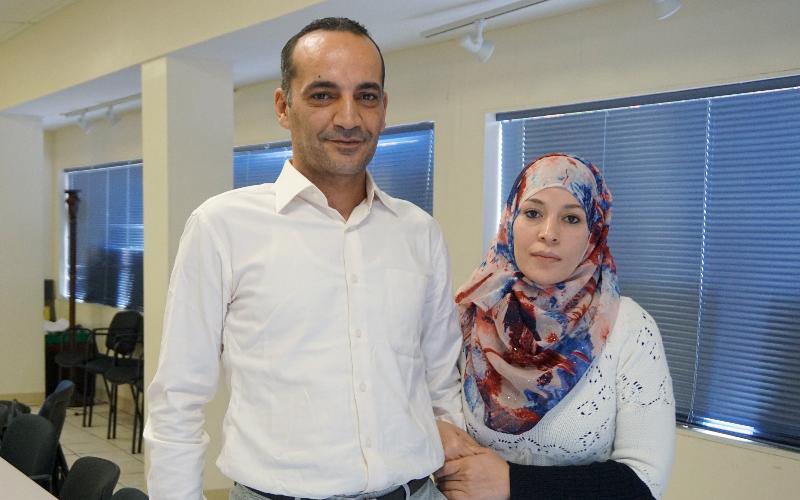How Syrian refugees get to the United States
TNS/This couple came to the U.S. 10 months ago after their infant son was killed in an airstrike in Damascus, Syria.
WASHINGTON (TNS) — A growing chorus of lawmakers, including Speaker Paul Ryan, has said the United States Syrian refugee program should be paused while Congress evaluates the process for safety concerns following the Paris attacks.
A CQ Roll Call analysis shows that the 1,869 Syrian refugees who have crossed U.S. borders since October 2014 were likely screened by the FBI, passed an in-person Department of Homeland Security interview and underwent other security and background checks.
The Obama administration said it would take in 10,000 additional Syrian refugees in fiscal 2016. The fiscal 2015 total was 1,682.
The resettlement application process
The United Nations High Commissioner for Refugees
The majority of potential refugee referrals for the United States are delivered by the U.N. High Commissioner for Refugees, serving as an intermediary between the refugee and the United States.
Those attempting to come into the country can also apply on their own, though only about 25 percent do so, a State Department official said during a background briefing for reporters in September. The rest go through this U.N. agency, which also screens refugees before they even come across the radar of a U.S. official.
Department of Homeland Security
Refugees coming from Syria immediately trigger an additional layer of security, known as the “Syria Enhanced Review.”
A U.S. Citizenship and Immigration Services (USCIS) official reviews each refugee’s case before scheduling an interview. If certain criteria are found during the review, the agency escalates the case to its Fraud Detection and National Security Division, according to FDNS acting Associate Director Matthew Emrich testimony at an October Senate hearing.
In-person screening
Once a Syrian refugee’s case is reviewed, a field team conducts an interview to determine whether he or she should legally be considered a refugee, the State Department official said in September.
At that time, USCIS takes fingerprints and a photo of the person applying to come to the U.S.; this data passes through an FBI database. DHS also screens the person against a terrorist and criminal watchlist, as well as a database of previous run-ins with immigration officials.
Security checks
A slew of federal agencies get involved with vetting Syrian refugees, including the Department of Defense.
Most of the security details are classified, though Emrich’s testimony said further checks involve the State Department’s Consular Lookout and Support System, the FBI’s Terrorist Screening Center and interagency checks from the National Counterterrorism Center.
Health screening
While the security checks take place, the refugees undergo health assessments for diseases that could prevent them from entering the United States.
Tuberculosis is the most common disease of concern the U.S. officials find, according to the State Department official on background. Additional screenings include syphilis, gonorrhea and leprosy.
Testing positive for one of these diseases doesn’t automatically disqualify refugees from coming to the United States, but it does delay the process while they undergo treatment.
Arrival
On arriving in the United States, refugees can run into additional questioning from Customs and Border Patrol and the Transportation Security Administration.
Most refugees go through a three-day class giving them basic information about life in the country. Refugees are provided between one and three months’ assistance with housing, food and clothing, according to the State Department.
Refugees lose their refugee status after one year, at which point they must apply for permanent alien status. After five years, refugees are eligible to apply for U.S. citizenship.
–Sean McMinn
CQ-Roll Call
CQ-Roll Call

No comments:
Post a Comment
Thanks for commenting. Your comments are needed for helping to improve the discussion.